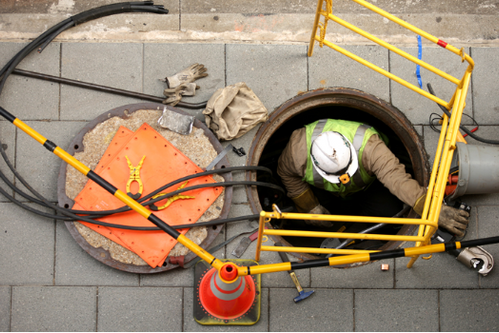Non-Permit Confined Space (NPCS) vs. Permit Required Confined Space (PRCS)
The simple definition of a confined space is an area that is large enough for a worker to enter and work, but that is tough to get in and out of and isn’t designed for regular occupancy. With a definition like that, there are so many spaces that would qualify - under the sink, an attic crawl space, the shed that houses an air compressor. While all of them qualify as a confined space, not all of them will be classified as a permit-required confined space (PRCS).
OSHA has copious files relating to the differences between permit required and non-permit required spaces. For a better understanding we can start with the fact that non-permit required spaces do not contain or, with respect to atmospheric hazards, have the potential to contain any hazard capable of causing death or serious physical harm. These are places that may be tough to get into, but aren’t going to hold dangers to your breathing, or the sort of engulfment hazards you might find in a grain elevator or similar facilities.
Permit-required confined spaces, however, are more complex, and it may take some training to spot the difference. A PRCS meets the simple definition of a confined space plus one or more of these additional criteria:
- Space contains or has the potential to contain a hazardous atmosphere.
- Contains a material (water, grain, petroleum products) that has the potential to engulf an entrant.
- Has a design that may either trap an entrant or hold a toxic atmosphere that may asphyxiate that worker.
- Contains any other hazard to health or recognizable serious safety issue.
Workers and any rescuers must be aware of the difference between permit-required and non-permit required spaces. It is clear that a non-permit required space will require different precautions than one recognized as needing permits for entry.
The requirements to protect workers in permit required confined spaces include ventilation, respiratory equipment, protective clothing, gas monitoring equipment and retrieval equipment such as harness, winch and overhead anchorage point.
Things tend to get difficult for rescuers upon arrival at a scene of a confined space accident. If the entry equipment ( ventilation, gas monitor, retrieval equipment, etc.) isn’t on-site, or if the space isn’t specifically marked as permit-required, there is a tendency to assume no dangers exist for the new entrants. It is important to remember that conditions can change in confined spaces, even ones that have been marked as non-permit required in the past.
The beginning of all decision-making processes when entering a confined space must heavily favor the cautious approach. No matter if a space is considered or has been labeled as an NPCS, the entrant who knows of the potential dangers will always err on the side of safety.
If all unknown confined spaces are initially treated as permit required, workers and rescuers eliminate the potential for serious injury at the expense of a little extra time. Anyone with experience knows that reversing that scenario – treating all confined spaces as harmless – is a recipe for disaster.
Recent Posts
-
Promoting Safety: National Work Zone Awareness Week is April 15-19, 2024
Each year, the National Work Zone Awareness Week (NWZAW) places the spotlight on the importance o …Apr 11th 2024 -
Understanding 4 Gas Monitors: How They Work & Why They Are Important
In today’s increasingly dynamic industrial landscape, 4 gas monitors have emerged as critical com …Apr 8th 2024 -
April Showers Require Workers to Wear Hi-Vis Safety Rain Gear
While April showers bring May flowers, they also bring challenges, particularly for those working …Apr 1st 2024





